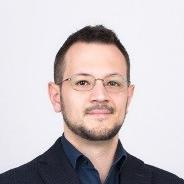Advances in Regenerative Medicine and Tissue Engineering
A special issue of Processes (ISSN 2227-9717). This special issue belongs to the section "Pharmaceutical Processes".
Deadline for manuscript submissions: closed (30 June 2021) | Viewed by 8473
Special Issue Editors
Interests: biomaterials; bone regeneration and differentiation; MSCs differentiation; bone prosthesis materials; bioreactor; organ-on-chip; TRP channels
Interests: bone regeneration; biomaterials; dental implants; MSCs differentiation; bone substitute materials; biological interfaces
Special Issues, Collections and Topics in MDPI journals
Special Issue Information
Dear Colleagues,
Tissues and organs of the body have both structure and function, therefore in tissue engineering any proposed approach must be able to mimic the morphology and characteristics of the original tissue or be able to stimulate the regeneration of the original tissue. In regenerative medicine, it is important to consider many aspects such as the material used, the structure of the scaffold, the growth factors, and the cell populations, in particular stem cells.
For example, with more than 2 million bone grafts performed annually worldwide, bone reconstruction is a primary task of regenerative medicine, which may rely on a growing variety of sources of stem cells suitable for autologous transplants. Notwithstanding the remarkable advancements in bone regeneration techniques and the great potential of mesenchymal stem cells (MSCs), the treatment of critical-sized defects with tissue engineering has yet to be achieved. Human mesenchymal stem cells have been shown to be particularly suitable for auto-transplant procedures. Apart from bone marrow, MSCs can be obtained from the umbilical cord, adipose tissue, the placenta, the human synovial membrane, and the dental pulp of deciduous teeth. Independently of the type of grafting, the challenge in bone tissue engineering is represented by critical-sized bone defect, i.e., larger bone defects, and osseous injuries unable to heal spontaneously.
Only through an integrated approach will multidisciplinary teams succeed in fabricating complex scaffolds, including live cell populations endowed with the most sophisticated features of biomimicry. Indeed, tissue formation requires different cell populations to cooperate to set up a complex 3D tissue under the guidance of bio-mechanical cues.
This Special Issue on bone and tissue regeneration aims to highlight the new approach of treatment based on the comprehension of the physiology and the interplay between different cell types. Topics include but are not limited to the following:
- Use of MSCs in regenerative medicine;
- Control of angiogenesis in tissue regeneration;
- New approaches of MSC isolation from different sources;
- Bioactive bone substitution.
Dr. Tullio Genova
Prof. Federico Mussano
Guest Editors
Manuscript Submission Information
Manuscripts should be submitted online at www.mdpi.com by registering and logging in to this website. Once you are registered, click here to go to the submission form. Manuscripts can be submitted until the deadline. All submissions that pass pre-check are peer-reviewed. Accepted papers will be published continuously in the journal (as soon as accepted) and will be listed together on the special issue website. Research articles, review articles as well as short communications are invited. For planned papers, a title and short abstract (about 100 words) can be sent to the Editorial Office for announcement on this website.
Submitted manuscripts should not have been published previously, nor be under consideration for publication elsewhere (except conference proceedings papers). All manuscripts are thoroughly refereed through a single-blind peer-review process. A guide for authors and other relevant information for submission of manuscripts is available on the Instructions for Authors page. Processes is an international peer-reviewed open access monthly journal published by MDPI.
Please visit the Instructions for Authors page before submitting a manuscript. The Article Processing Charge (APC) for publication in this open access journal is 2400 CHF (Swiss Francs). Submitted papers should be well formatted and use good English. Authors may use MDPI's English editing service prior to publication or during author revisions.
Keywords
- tissue regenerations
- mesenchymal stem cells
- adipose-derived stem cells
- bone differentiation
- angiogenesis
- tissue vascularization
- bioreactor
- 3D culture
- bone scaffold
- bone graft






